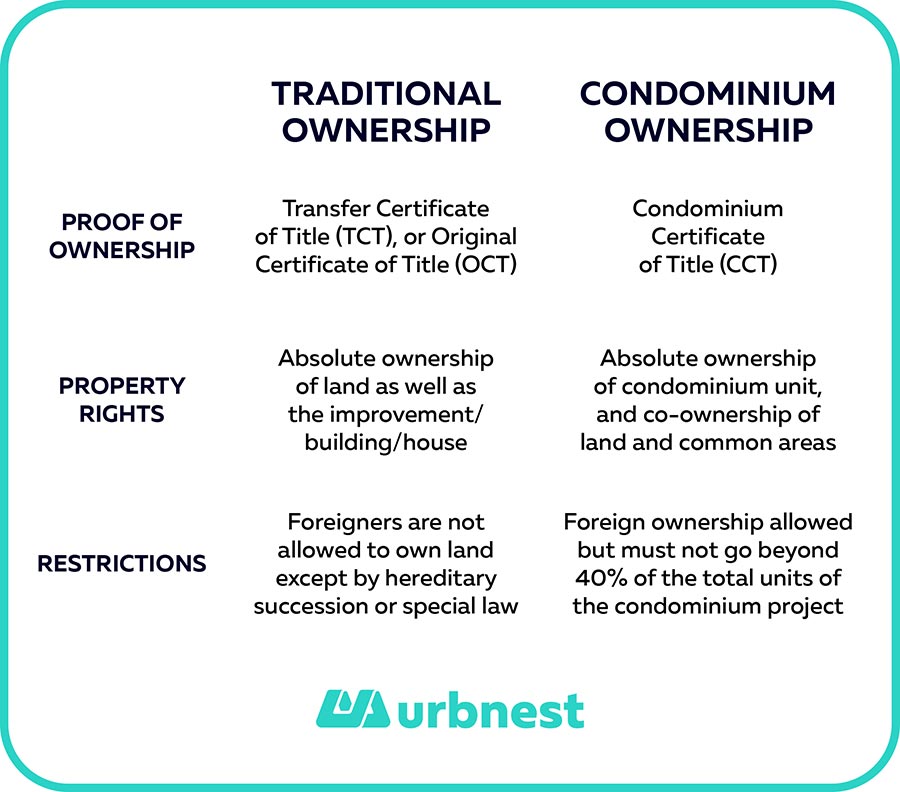
To move closer to the city’s central business districts, professionals and younger families have become more open to condo ownership in the Philippines. Condos that feature amenities promoting recreation, and that have retail components have seen consistent demand because of the vibrant and convenient lifestyles they offer. And being in strategic locations with high rental yield potential, condos have also become passive income generating assets appealing to investors.
If you’re considering on investing in preselling condominiums in Metro Manila, it is important to know several facts from laws governing condominiums. This article will explain concepts on condominium ownership that you should be aware of.
What is a condominium?
The word condominium is commonly associated with high-rise residential buildings with amenities. But to better understand what it really means, let us first revisit its etymology.
Condominium originated from two Latin words, “CON” which means “TOGETHER WITH” and “DOMINIUM” which means “RIGHT OF OWNERSHIP”. This forms the modern word “CONDOMINIUM”. Therefore, the word condominium is not the physical structure but a concept of “OWNERSHIP”. It is how you own the real estate property.
Republic Act 4726 (The Condominium Act) defines condominium as “an interest in real property consisting of separate interest in a unit in a residential, industrial or commercial building and an undivided interest in common, directly or indirectly, in the land on which it is located and in other common areas of the building and an undivided interest in common, directly or indirectly, in the land on which it is located and in other common areas of the building.”
Is there a difference between traditional ownership and condo ownership?
We can differentiate these two types of ownership in terms of three aspects.
Proof of ownership –The legal document used for traditional property ownership is Transfer Certificate of Title (TCT) is the. While for a condominium ownership it’s a Condominium Certificate of Title (CCT)
Property Rights – In traditional ownership, you own in fee simple (absolute) the land as well as the improvement/building/house. While in a condominium ownership, you have absolute ownership over your unit only and you co-own the land and common areas.
Restrictions – Traditional ownership doesn’t allow aliens/foreigners to own land except by hereditary succession or special law. While in a condominium ownership, they can own units. As long as foreign ownership doesn’t go beyond 40% of the total units of the condominium project.
Can a foreigner own a Condo Unit?
Yes. Foreigners may invest in condo units in the Philippines. Provided that they only own 40% of the total number condominium units in a project.
The 1987 constitution states that aside from citizens, property ownership in the Philippines is extended to corporations considered as Philippine nationals. These are corporations where at least 60% are owned by Filipinos, and a maximum of 40% owned by foreign nationals.
Can horizontal projects such as townhouses and subdivisions be a condominium?
Yes, since a condominium is a concept of ownership and not a type of real estate project. There are townhouse developments, for example, whose proof of ownership are CCTs. In this set-up, homeowners will also become part of a condominium corporation. Which in turn will manage the whole community.
What happens to condominiums after 50 years?
Many people are hesitant in buying a condo unit thinking that the physical structure of a condominium project will only last for 50 years.
The 50-year time span is actually the natural lifespan of a corporation in accordance with pertinent law. After this term, the incorporators will decide whether to continue existing or voluntarily dissolve. And with the recent amendment of the corporation code of the Philippines, corporations can now exist perpetually.
Should the project be deemed as obsolete and uneconomical after 50 years, the condominium corporation must have a majority vote. To determine whether to restore the project, sell the land, or maybe propose a possible joint-venture deal with its original developer to construct a new condominium project.